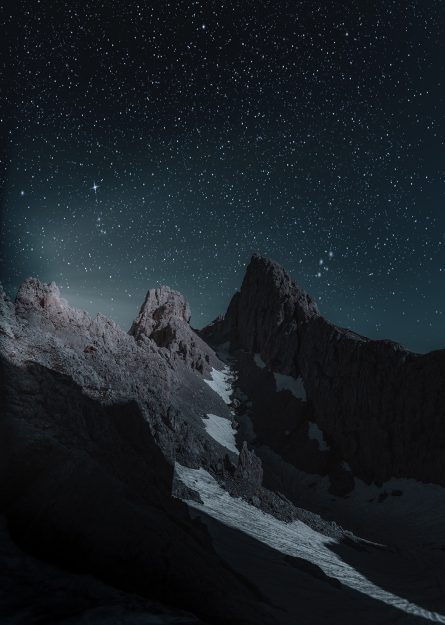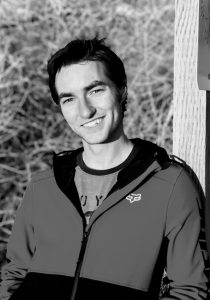A Study of Aperture, Shutter Speed and ISO
By Kaden Stephens
The most important element of photography is lighting. Without it, images would not be possible. The way that light is used can depict the story an image will tell. When it comes to photography, the amount of light we use is referred to as exposure. The greater the exposure, the more light we are letting into an image. Exposure requires a balance of light. Too much light will create overexposed highlights and a faded image. Too little light will create underexposed images that are too dark to see. Through the study of aperture, shutter speed and ISO, you can learn to balance the light and produce strong contrasts and vibrant colors within your photography. To look into these lighting methods, I have collected a few example images from pexels.com.
Aperture
Aperture refers to the opening within the lens that controls the amount of light going into the camera. Its function is similar to that of a pupil, which dilates according to the brightness of its surroundings. Aperture, similarly, will control the size of the opening within your camera’s lens and adjust your lighting and depth of field according to the subject of your image. A camera’s aperture is measured in units of f-stops or f numbers. The lower your f-stop, the wider your aperture will be, and vice versa.
Wide Aperture
The above image is an example of a wide aperture. This means the lens is more open and is allowing more light into the camera. A photographer would want to use a wider aperture to create a shallow depth of field. This would put a greater focus on the single subject of an image while blurring the background. This can be seen in the example above. The subject of the image (the camera) appears clear while the background is blurred. This keeps the focus on the subject rather than the entirety of the image. This wider aperture would be accompanied by a smaller f-stop, like f/2.
Narrow Aperture
This next example demonstrates a narrow aperture. This means the opening in the lens is more narrow and is constricting the amount of light making its way into the camera. This method produces a deeper depth of field that creates an even amount of detail throughout the image. This eliminates the background blur that would be present in a wide aperture image. A photographer would want to use a narrower aperture to produce an even focus throughout the image with consistent details. Looking at the example above, you can see that everything from the close-up trees to the distant mountains is in focus and well defined. A narrower aperture would be accompanied by a larger f-stop, like f/16.
Shutter Speed
Shutter speed refers to the amount of time the shutter of your camera is open. Depending on the speed of your camera’s shutter, an image can look frozen in time or show blurs of motion. Shutter speed also accounts for the amount of time you are giving light to enter your camera’s sensor and increase the exposure of your image. Shutter speed is measured by seconds or fractions of seconds. This depicts the amount of time your camera’s shutter curtain is open, exposing your sensor to light.
Fast Shutter Speed
The example above shows an image taken with a fast shutter speed. Notice how each of the water droplets appears frozen in time. There is no motion blur from the moving water. This is because the shutter curtain of the camera was open just long enough to capture the image without getting any blur from the movement of the water. A fast shutter speed would be around 1/500 of a second and is a great way to capture a frozen image.
Slow Shutter Speed
This next example shows an image taken with a slow shutter speed. Notice the difference from the previous example where the water droplets are no longer frozen in time but blend together to show the motion of the water. This is due to the camera’s shutter being open long enough to capture the motion of each water droplet. This helps bring life and movement into an image. This method also helps when taking pictures in darker areas. When the shutter speed is slower, it allows more light to reach the sensor and brightens a darker image. The example above was taken in darker lighting, but with the slower shutter, more light and contrasts were able to be visible in the image.
ISO
Another technique that I find interesting when it comes to exposure is a camera’s ISO. The ISO represents the sensitivity of a light sensor within your camera. A low ISO would have lower light sensitivity and a higher ISO would have greater light sensitivity. There is a delicate balance between your ISO, aperture and shutter speed. More is not always better. Having the ISO set too high will fill an image with digital noise, making it look grainy. Too low of ISO will leave an image underexposed.
High ISO
The example above shows an image taken with a high ISO. An interesting thing about ISO is that it is very helpful when shooting night photography. By raising the ISO, you can brighten a darker setting and bring out more vibrant colors. As stated before, there is a delicate balance that needs to be maintained to keep an image from looking too grainy. When shooting night photography, it is best to use a high ISO with a wide aperture and a slow shutter speed. This will allow the maximum amount of light to be captured in the image. The camera also needs to be held still. This can best be accomplished through the use of a tripod.
FIND ME ON SOCIAL MEDIA








Hey Kaden, I really loved your content and I really liked how you stuck to a theme with all of your pictures. I really like how you broke down what aperture is, great job
Great job on your blog. I like how professional it looks. All the pictures you used do a great job of showing the different elements.
I really liked your content and how you presented it. I feel like the images fit the categories of photography really well. I think it would be interesting to learn about high iso as well, especially like your image shows by photographing at night. Here’s my blog link: https://wordpress.com/page/sydneyirvingbyui.wordpress.com/140 I also liked Brielle Judy’s blog: https://briellejudy.wordpress.com/2022/04/26/the-art-of-aperture-shutter-speed-and-iso/comment-page-1/?unapproved=6&moderation-hash=4f9335800870d2ffdcc05d5608774b40#comment-6
Hi Kaden! I loved your post! Your blog is well organized and cohesive. The explanation you provided for each concept is clear and shows research. Also, the images you picked are well thought out and exemplify the settings. I tried to accomplish similar results in my blog post, here’s the link if you want to check it out rebecacm642.wordpress.com/2022/04/27/exposure/
I also enjoyed reading the post of Judy Brielle, this is the link to her post https://briellejudy.wordpress.com/2022/04/26/the-art-of-aperture-shutter-speed-and-iso/
I love how you contrasted shutter speed using waterfalls. Contrasting the frozen water droplets with the blurred water was a great way to teach that concept. I also like how clearly you explained and showed bokeh with your photo example. Kathy and I both included examples of bokeh in our blogs. Here is her blog https://scritchscratchart.wordpress.com/2022/04/27/week-2-fast-and-wide-slow-and-skinny/ and here is mine https://photography537355146.wordpress.com/.